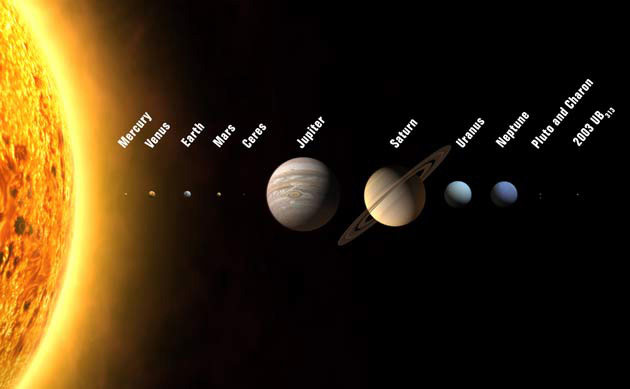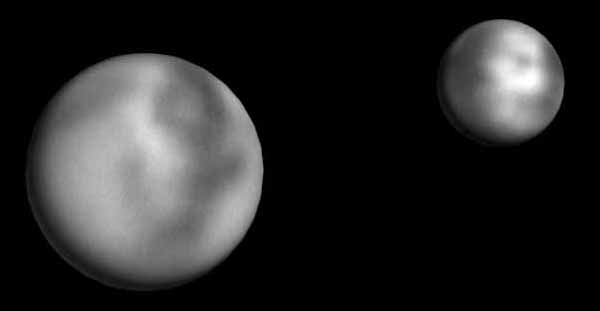 |

The Solar System consists of the Sun
and those celestial objects bound to it by gravity, all of which
formed from the collapse of a giant molecular cloud approximately
4.6 billion years ago. Of the retinue of objects that orbit the Sun,
most of the mass is contained within eight relatively solitary
planets whose orbits are almost circular and contained within a
nearly-flat disc called the ecliptic plane. The four smaller inner
planets; Mercury, Venus, Earth and Mars, also called the terrestrial
planets, are primarily composed of rock and metal. The four outer
planets, Jupiter, Saturn, Uranus and Neptune, also called the gas
giants, are composed largely of hydrogen and helium and are far more
massive than the terrestrials.

The Inner planets
are called terrestrial planets. That means that they are like the
earth in some ways. The terrestrial planets Mercury, Venus, Earth,
Mars, and the earth's moon have similar compositions and densities.
These planets are close to the sun, rocky, and dense. They are
fairly small. They have few moons and no rings. Their environments
are oxidized; that is, oxygen dominates the chemistry. Meteors,
tectonic activity, and erosion have modified the surfaces of the
terrestrial planets.
The outer planets are also called
the Jovian planets or gas giants. Like the inner planets, the
outer planets have similar characteristics to one another. The
outer planets are so much larger than the inner planets that
they make up 99 percent of the mass of the celestial bodies that
orbit the
Sun.
Although mainly composed of gas, the outer planets also have
other ingredients. Somewhere at the center is what scientist
refer to as a rocky core, although it is actually composed of
liquid heavy metals. While the inner planets have few or no
moons, the outer planets have dozens each. The inner and outer
planets are separated by the asteroid belt.


The dwarf planets,
Pluto and Chiron
|